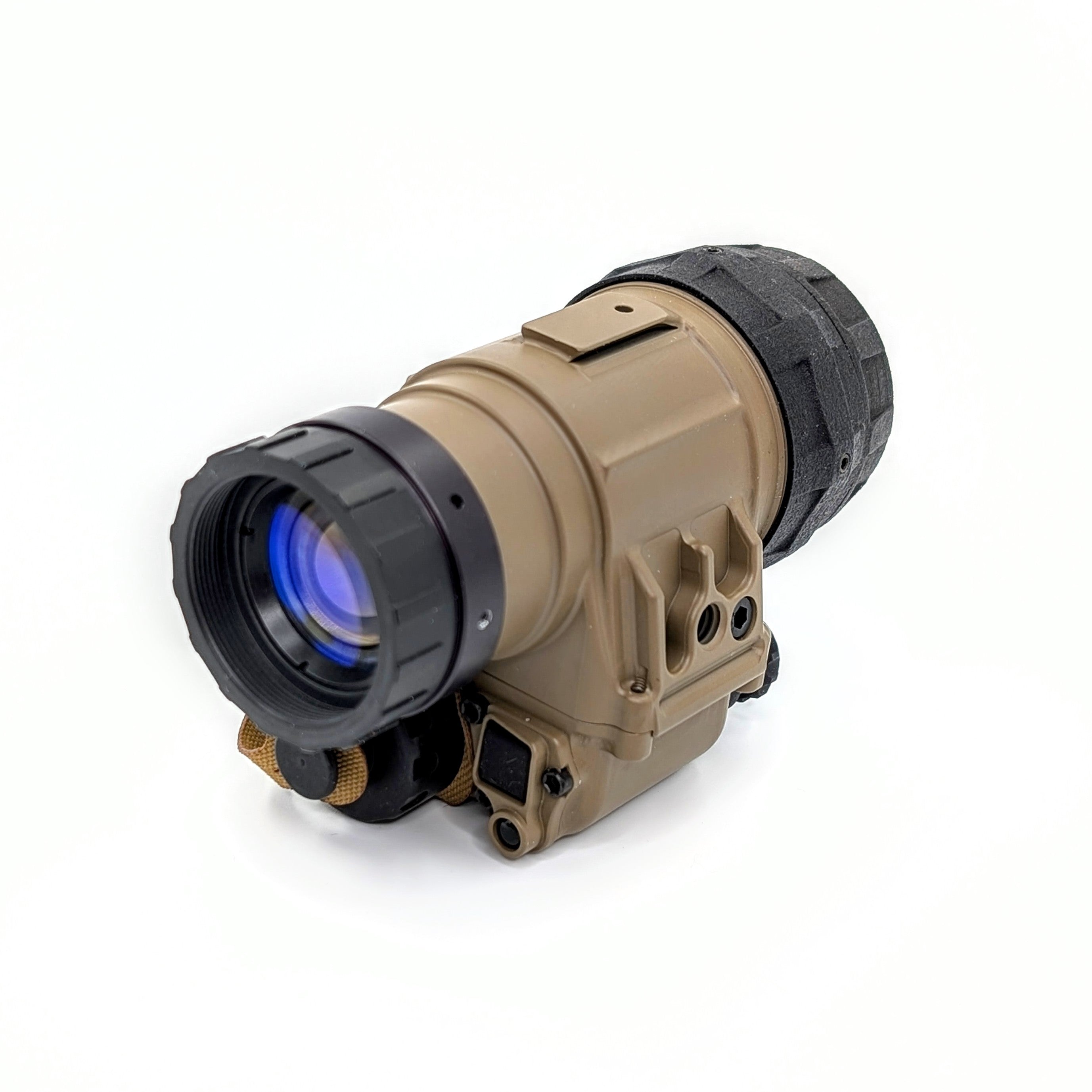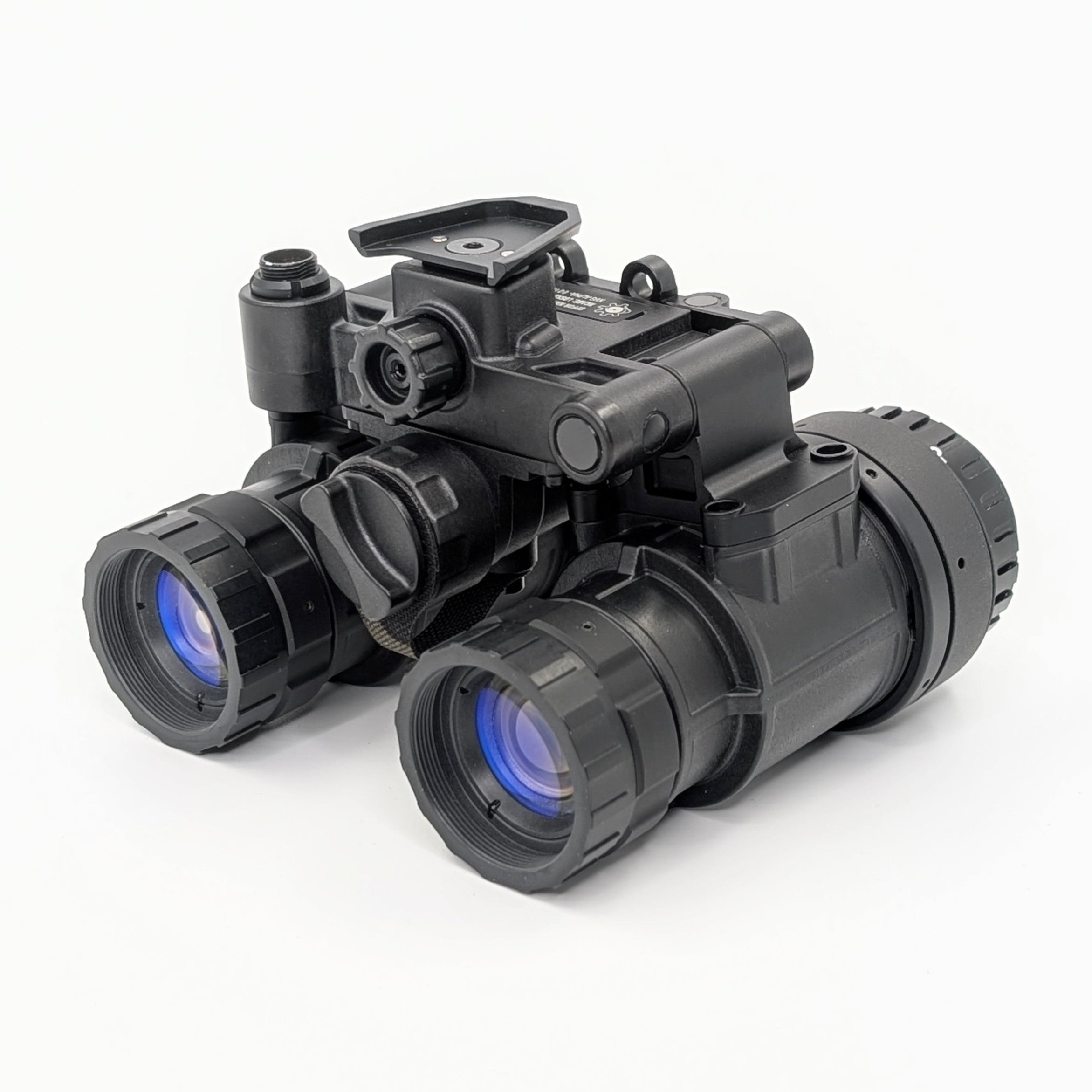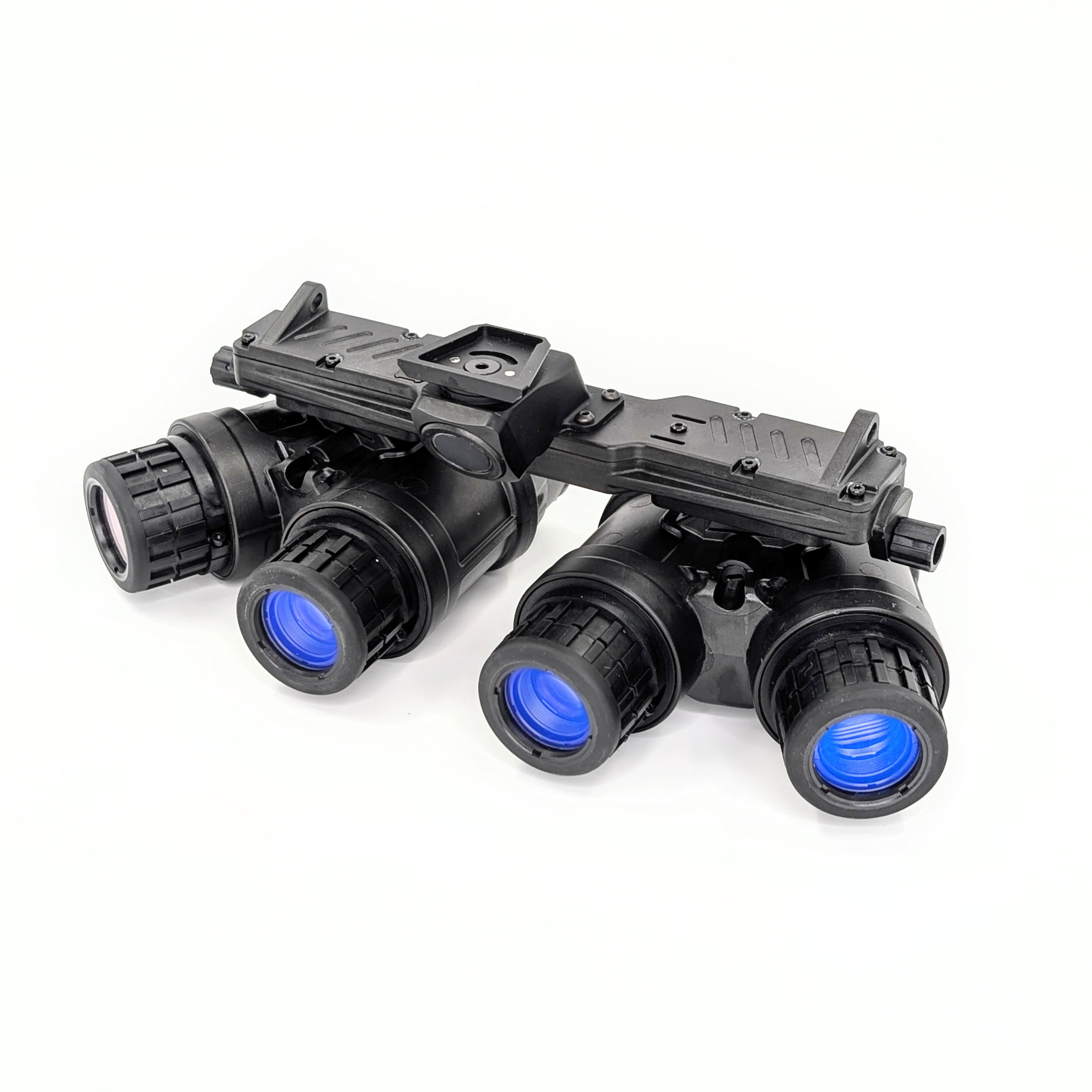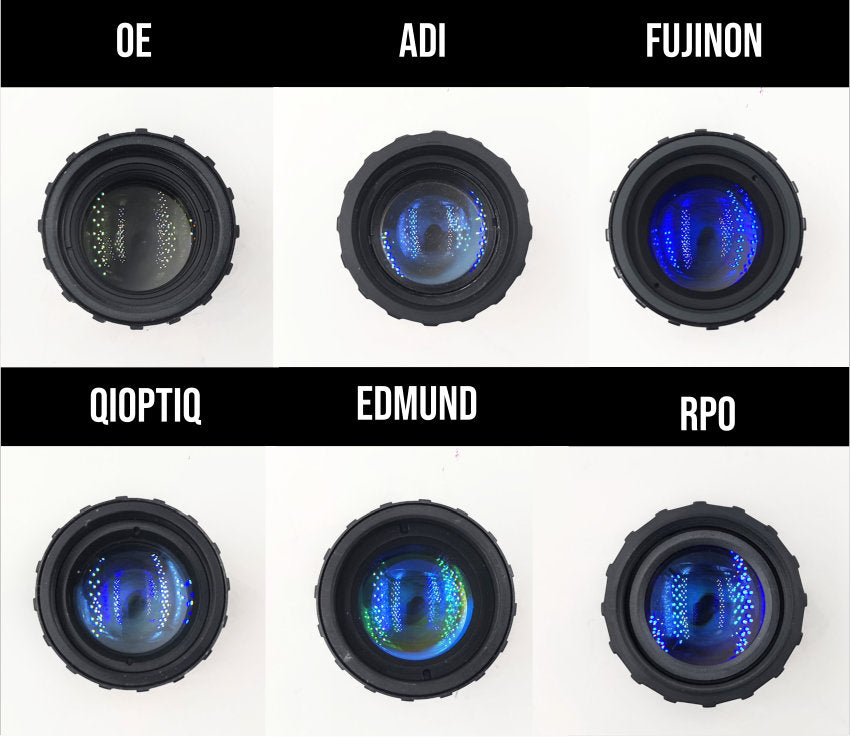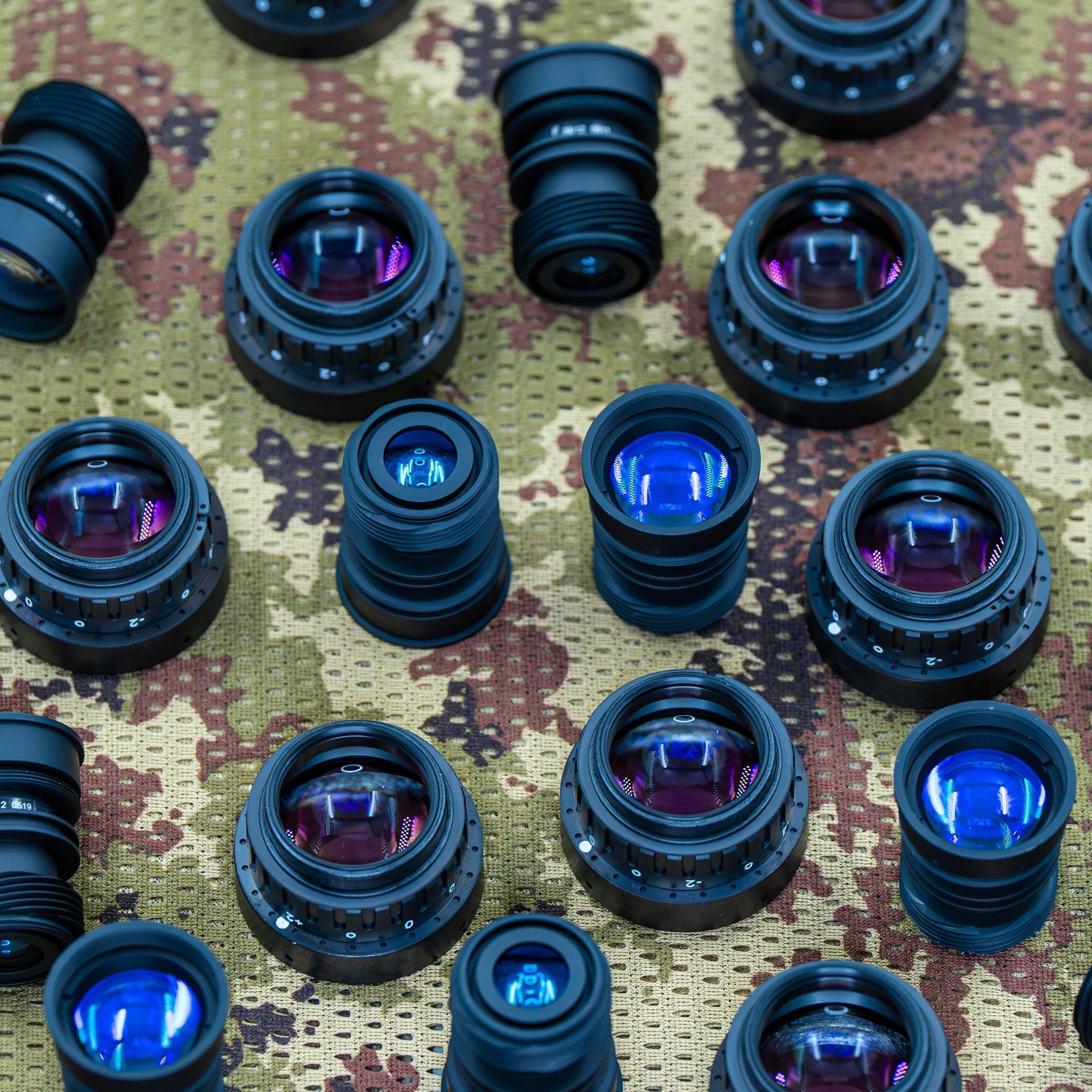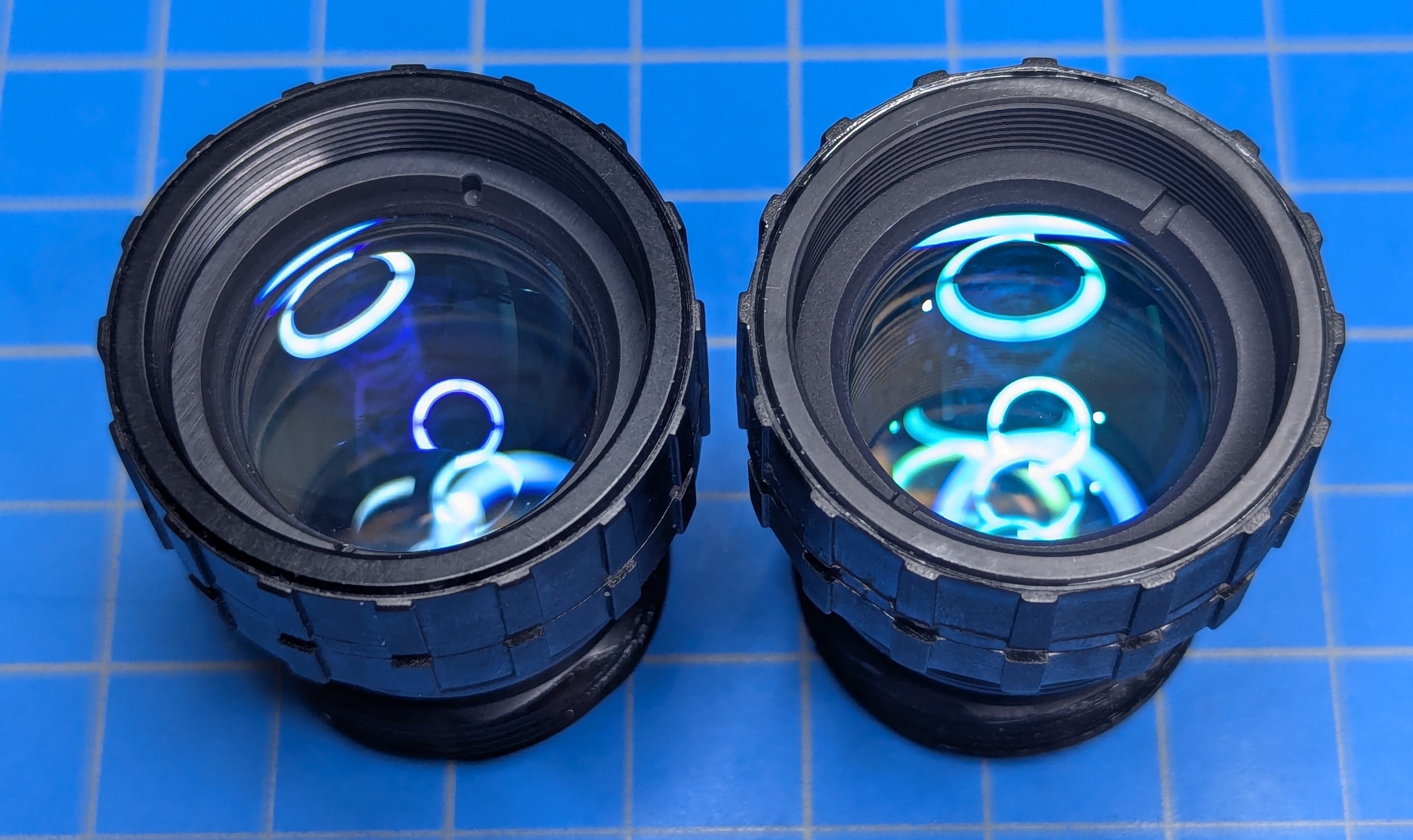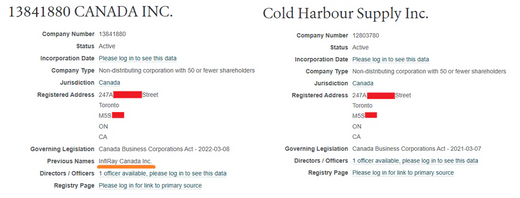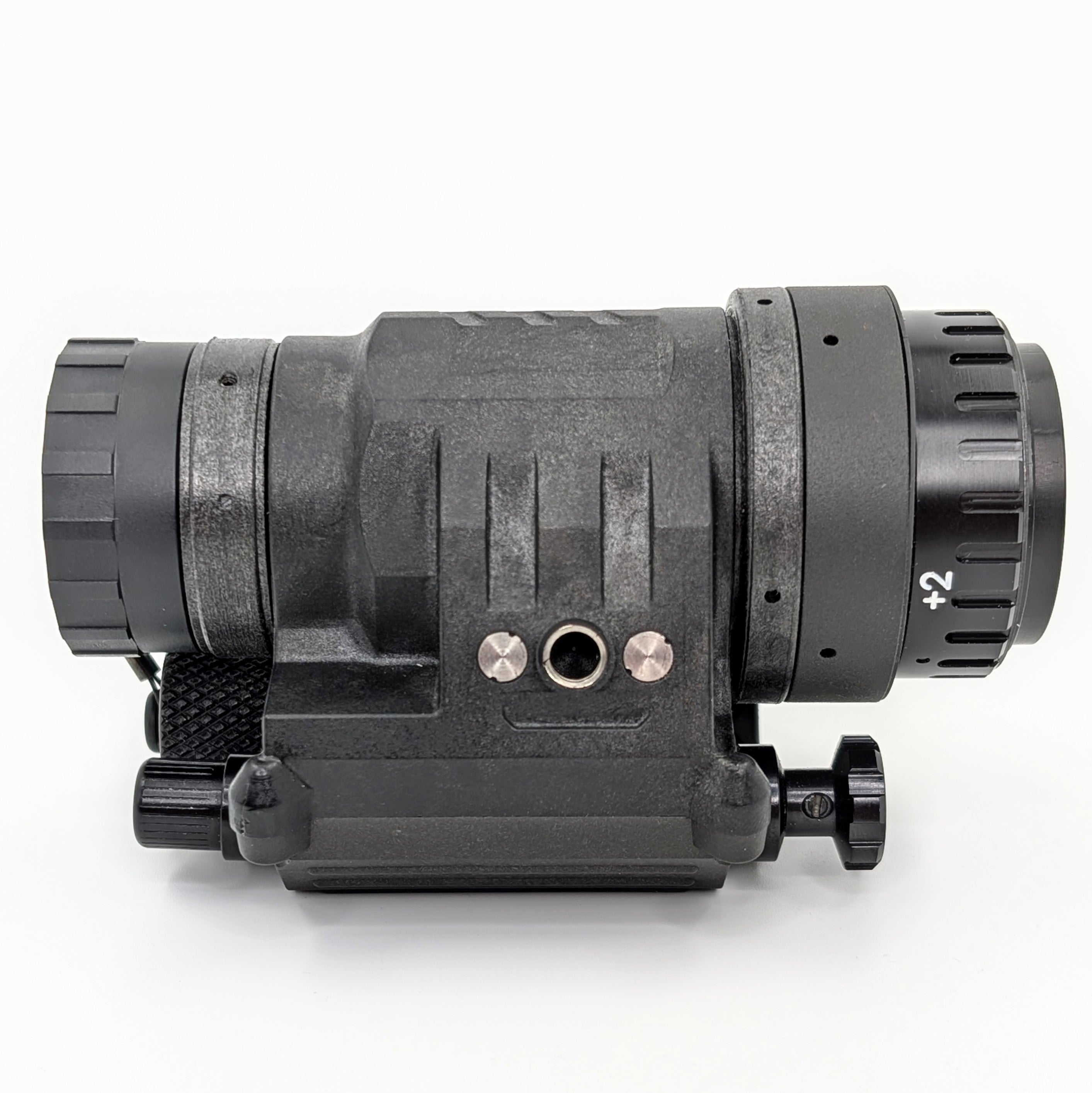Disclaimer: Lens information is extremely difficult to ascertain in an industry as elusive as nightvision, and is very difficult to verify as companies do not like to discose OEMs. Information provided should not be taken as absolute fact, despite our best efforts in our years of research and reliable sources.
Not all PVS-14 lenses are made equal. Some are very similar, some are the same, and some are in completely different ballparks. There are so many different PVS-14 systems, it can be incredibly confusing.
To start, there are tons of different brands of PVS-14 lenses, many of them can be identified by their CAGE codes. For example, Carson Industries lenses are marked 1XEP3, Elbit Systems lense are marked 13567, etc. If you are not sure what lens you have, look for the markings located just under the knurling of the lens. However, some of them will look suspiciously similar, and that's because they are the same. Most companies that have lenses, don't actually make lenses themselves. They are typically outsourced. The biggest manufacturers are Qioptiq (Singapore) and Fujinon (Japan?). Qioptiq makes objective lenses for Elbit, and have also made them for Carson as well as many other manufacturers. Fujinon makes objectives for Carson and L-3, as well as many other companies. It gets very confusing because different companies will swap lens suppliers depending on contract requirements, pricing, etc. For example, Carson Industries currently uses Fujinon objectives, however in the past they have used Qioptiq. L-3 currently uses Fujinon as well, however in the past they have used Edmund Optics.
In this article we are mostly going to talk about the PVS-14 objective lenses that are commonly seen in Canada, or lenses we plan to offer: OE, ADI, Fujinon, Qioptiq, Edmund, RPO.

OE: Optronics Engineering is an Israeli defense company that produces PVS-14 lenses, assemblies, and tools. Their lenses are sold under brands such as AGM, Apache, Alpha Optics, and various other lower end wallet friendly brands. We explored their use in our early days and determined that the quality is too low for us to feel good about selling. These are uncoated for glare suppression, don't seal, aren't water-tight, and lack optical clarity.
ADI: ADI Trident lenses originate in Taiwan and are relatively new. They came out a year or two ago and and cater to the international market where US Milspec lense are hard to come by. They are an upgrade compared to Optronics but have their issues. We sold a few of them in our early days, but quickly dropped the product once we tested and found that the lenses do not seal and are not water-tight.
Fujinon: Fujinon is a large Japanese company that makes a lot of different lens systems. They make excellent PVS-14 objective lenses that are used by the US military. Carson Industries currently uses Fujinon, as does L-3. They can be identified by their deep blue coating and single row of knurling. It is likely that these lenses are made in Japan.
Qioptiq: Qioptiq is historically one of the largest suppliers of PVS-14 lens systems in the world. Their lenses are made in Singapore, and have been standard for the US military and law enforcement for over a decade as ITT/Excelis/Harris/Elbit have been continuously using them and supplying them. They can be identified by their dull, light blue lens coating and double row of knurling.
Edmund: Edmund Optics discontinued their PVS-14 objective lenses many years ago. They were made in the US, and are now highly sought after by collectors for their high quality. L-3 used Edmund lenses in the past for their systems. Edmund lenses can be identified by their beautiful Tiffany coating and deeply clear reflection.
RPO: Rochester Precision Optics have been making night vision lens systems for a long time. They are known for making the lens systems for the NVD BNVD series, as well as the very highly regarded L-3 PVS-31 lenses. RPO lenses are newcomers to the PVS-14 market, and are of excellent quality, though their main selling point would be the extreme light weight. They can be identified by their low profile, polymer construction, and deep clean coating with a colour halfway between Fujinon and Qioptiq blue.

One of the most important aspects of a lens is the coating. Not only does the coating boost transmission, but the coating should suppress lens flare. The following image compares the lenses in an urban environment underneath a building light to illustrate the lens flare pattern.

It is evident that OE is the worst, as there is no coating. ADI has less flare pattern, however the light causes a foggy appearance throughout the image. Fujinon is the first one to offer good flare suppression, however a crescent flare pattern is still visible. Qioptiq has similar flare suppression, but has a slightly different circle pattern. Edmund seems to have the best flare suppression with a long mushroom pattern. RPO has a bit more flare in a crescent ring pattern. RPO lenses apparently have increased light transmission over other lenses, but at the cost of slightly more lens flare.

Next we have a cluster of urban street lights roughly 100m away. This should depict how well the lenses focus light and prevent excess light from blurring other parts of the image. OE is very bad, in that other lights that aren't even in the field of view are casting rings throughout the image. ADI has less flare, but the street lights wash out nearby parts of the image. Fujinon, Qioptiq, Edmund, and RPO all look very similar as they are all US Milspec systems held to a very high optical standard.

These are zoomed in pictures of Zone 1 of the image on all six lens systems. Because of the high light, most of the images look very similar. OE and ADI are slightly blurrier, while Fujinon, Qioptiq, Edmund, and RPO look very similar as they are legitimate US Milspec systems.
It is important to note that while pictures and videos are the best things we can offer to digitally convey the experience a lens has to offer, it is very difficult to convey things such as lens distortion through images, they have to be experienced. OE has a noticeable amount of distortion. ADI also has distortion, however it is less in the center and more extreme in zone 3 compared to OE. Fujinon, Qioptiq, and Edmund are equal in this regard and have the least distortion, and are perceived as having no distortion. RPO has a slight degree of distortion compared to other US Milspec systems, one of the costs of being so low profile. However this distortion is very marginal and will not be noticed by most users. It certainly has not bothered any users.
Unfortunately full moon just passed a few days prior to these photos being taken, so the illumination level is extremely high even in the middle of the night. A segment will be added in lower light levels to compare light transmission more appropriately. This comparison is intended to be an ongoing project, so more comparisons will be added as appropriate.
Currently, Opfor Night Solutions offers Carson Industries objective lenses (Fujinon) on most of our products. In some cases Edmund lenses will be available. We are currently developing lightweight diopter assemblies so that RPO lightweight low profile lenses will also be available in the future.

